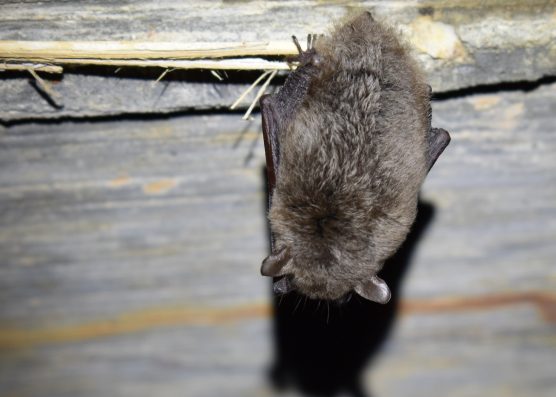White nose syndrome threatens Coast bats
Published 8:00 am Sunday, July 31, 2022

- A Southeastern myotis bat roosts in a culvert. (Photo by MSU Extension Service/Mandy Sartain) Alt text: A Southeastern myotis bat roosts in a culvert.
|
Getting your Trinity Audio player ready...
|
By Mandy Sartain
MSU Extension Service
BILOXI, Miss. — Bats provide incredible ecosystem benefits as the primary predators of night-flying insects, while also being one of the most misunderstood mammals in the world.
Bats evoke different feelings and thoughts within different folks when they appear in the evening sky. Some are in awe of the flying mammals’ acrobatics, while others are hesitant to appreciate their nightly presence. But there’s no mistaking that bats are vital players within the environment.
Movies and media have painted bats in a bad light for decades, presenting them as bloodthirsty, dirty creatures that get caught in your hair. In reality, bats are exceptional groomers that have mastered the art of elusiveness. Luckily, the 15 bat species found throughout Mississippi are all insectivores, meaning they feast only on insects.
Departing from their roosts at dusk, bats spend much of the night gorging near their bodyweight on night-flying insects. Their nightly menu of insects includes pests that cause itchy bites; damage our food crops, gardens and forests; or carry diseases that can be transmitted to our livestock, pets or us. Bats roost during the day in a variety of different places, including trees, caves, and man-made structures such as culverts, bridges, and abandoned (and sometimes not-so-abandoned) buildings.
On the Mississippi coast, where caves are nonexistent, bats prefer man-made structures and a tree habitat assortment including hollow tree cavities, exfoliating tree bark, dead upright trees and even tree foliage. When insect availability is low during the cold months, some bats hibernate while others migrate to warmer areas.
In a year-long monitoring effort done by a Mississippi State University graduate student, some species of bats were shown to be active year-round on the coast. This activity could have much to do with the mild winters the Mississippi coast experiences compared to other parts of the state. The combination of coast’s waterways and forests provide vital habitat for residential and migrating bat as they offer roosting sites, plentiful foraging opportunities and fresh water sources.
Unfortunately, Mississippi’s bats are facing many threats: habitat loss, roost destruction and human prejudices. Another major hazard is white nose syndrome (WNS), a disease that causes hibernating bats to become active when their energy and fat reserves are low. If food is unavailable for weeks to months, devastating mortalities result from WNS.
This disease has wiped out colonies of cave-hibernating bats due to the close quarters in caverns and the disease’s contagious nature. Just recently, WNS was confirmed in Mississippi on a tri-colored bat in a culvert in Montgomery County. Tri-colored bats are now considered for protection under the Endangered Species Act as continued monitoring of WNS is completed by researchers with the Mississippi Department of Wildlife, Fisheries and Parks.
As wintering cave-dwelling bats become increasingly vulnerable to WNS, coastal Mississippi forests could become a key habitat for the Southeastern bats that migrate to the area for summer and maternity season. To increase bat conservation and education on the Mississippi coast, an MSU graduate student at the MSU Coastal Research and Extension Center is monitoring bat presence and activity within coastal pine savannah forests.
To learn more about the bats of Mississippi, check out the Mississippi Bat Working Group for research and information. For coastal bat education and outreach, contact me at mandy.sartain@msstate.edu.





